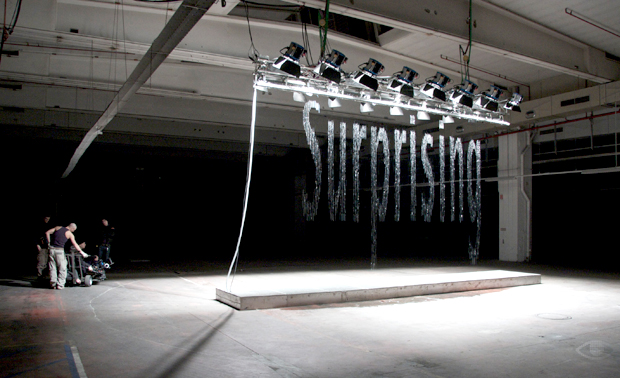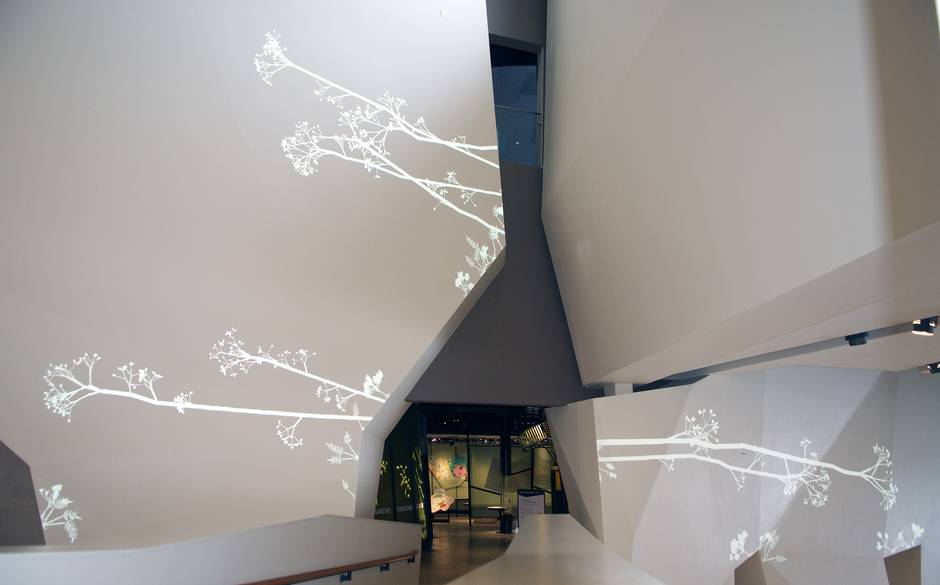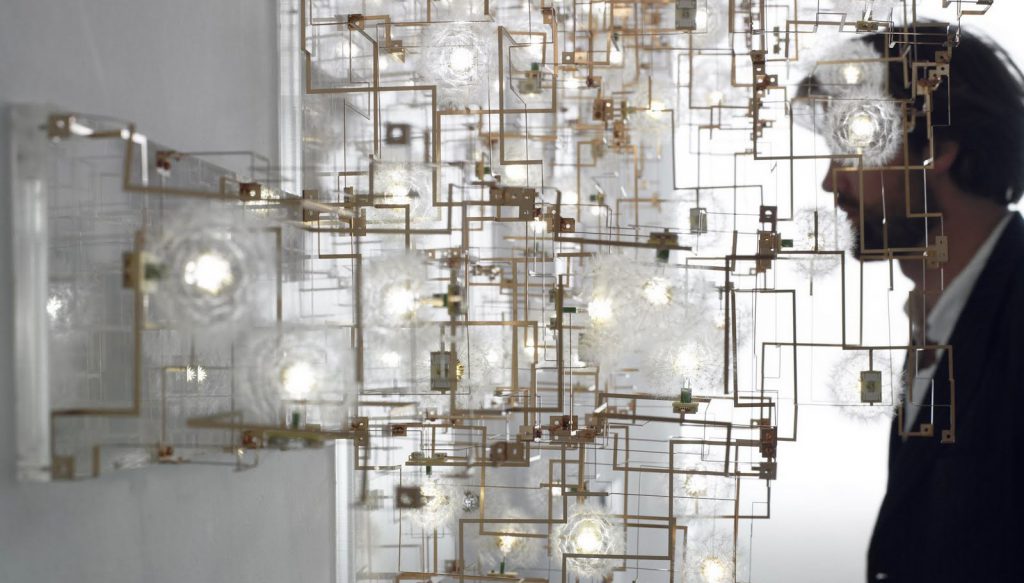Commercial and creative interests don’t always go hand-in-hand, and often a designer’s curiosity to truly change spaces and people is forgone for the more conservative or – more blatantly – cost-effective option.
Designers need to educate the market on why their curiosity can make a better world.
Curiosity is one of the best qualities a designer can have and no doubt one of the least appreciated. If you aren’t interested in the world around you, you’ll never even begin to understand how to fix it (or, at the very least, just make it suck less).

BIT.FALL: Curiosity about technology is a huge theme of the show. Both a symbolic and literal representation of the overflow of information, Bit.Fall is a mechanical device in which German artist Julius Popp cleverly used water to project words taken from news websites and search engines. 2002 to 2006
So it’s refreshing to see an exhibition that celebrates inquisitiveness and all the beautiful design it can inspire. Curious Minds: New Approaches in Design at the Israel Museum in Jerusalem, recently showcased the work of about 30 international designers who use “design to ask probing questions about human behaviour and to address the social, cultural, and ethical consequences of emerging technologies,” the press materials say.

LIGHTWEEDS: Dutch artist Simon Heijdens programmed digital weeds to “grow” according to real weather conditions. 2006
That includes Studio Drift, an Amsterdam-based design outfit that fused LEDs lights and dandelion seeds to create a cheery, artistic commentary on the coexistence of technology and nature; Troika, whose investigation into optics spawned a stunning mechanical-light sculpture for Swarovski; and Stefan Sagmeister, who’s featuring a segment of his hotly anticipated film about happiness and psychology(and who is as much an object of curiosity as he is a testament to its creative power).

FRAGILE FUTURE 3: Studio Drift shows that technology and nature can walk happily hand in hand with a phosphor bronze sculpture that conducts electricity to LED-equipped dandelion seeds.
Curiosity is jet fuel for creativity. Look at any of the above examples, and you’ll find that what they all share is a tenacious curiosity. But why is it so important – particularly in areas like design?

SELF PORTRAIT: Random International’s light reactive self portrait is the ulimate blank canvas. Stand in front of the canvas, and an ephemeral representation of you magically materialises. Done in collaboration with Rachel Verghis, 2010.
For no other reason, if you stick to the same routines for too long you become stale and boring. But beyond that, curiosity drives you forward into uncharted territory, ultimately making life and work more creative and rewarding, Here, practicing design must have a fundamental and almost obsessive relationship with all things curious.

SPHERE: Dutch artist, Maria Blaisse, is fascinated by forms. An obsession that has spanned her investigations into everything from hat designs for Issey Miyake to bamboo body envelopes like the one here, which was part of the 2008 Moving Meshes series.
Don’t let what you know stop you from looking into what you don’t know. Keep being curious about the world, and use it to inform design’s impact within it. Be nosy. Get inside the lives and heads of your end-users, clients and bosses, friends and family, acquaintances and strangers. Find out what makes them laugh, cry and scream. Stay curious about the practices of other industries, brands and designers. See if their solutions might help solve your problems. In your next conversation, be curious. Ask more questions. You’ll spark a more lively, creative discussion – and you’ll likely gain insights to apply with your next project.